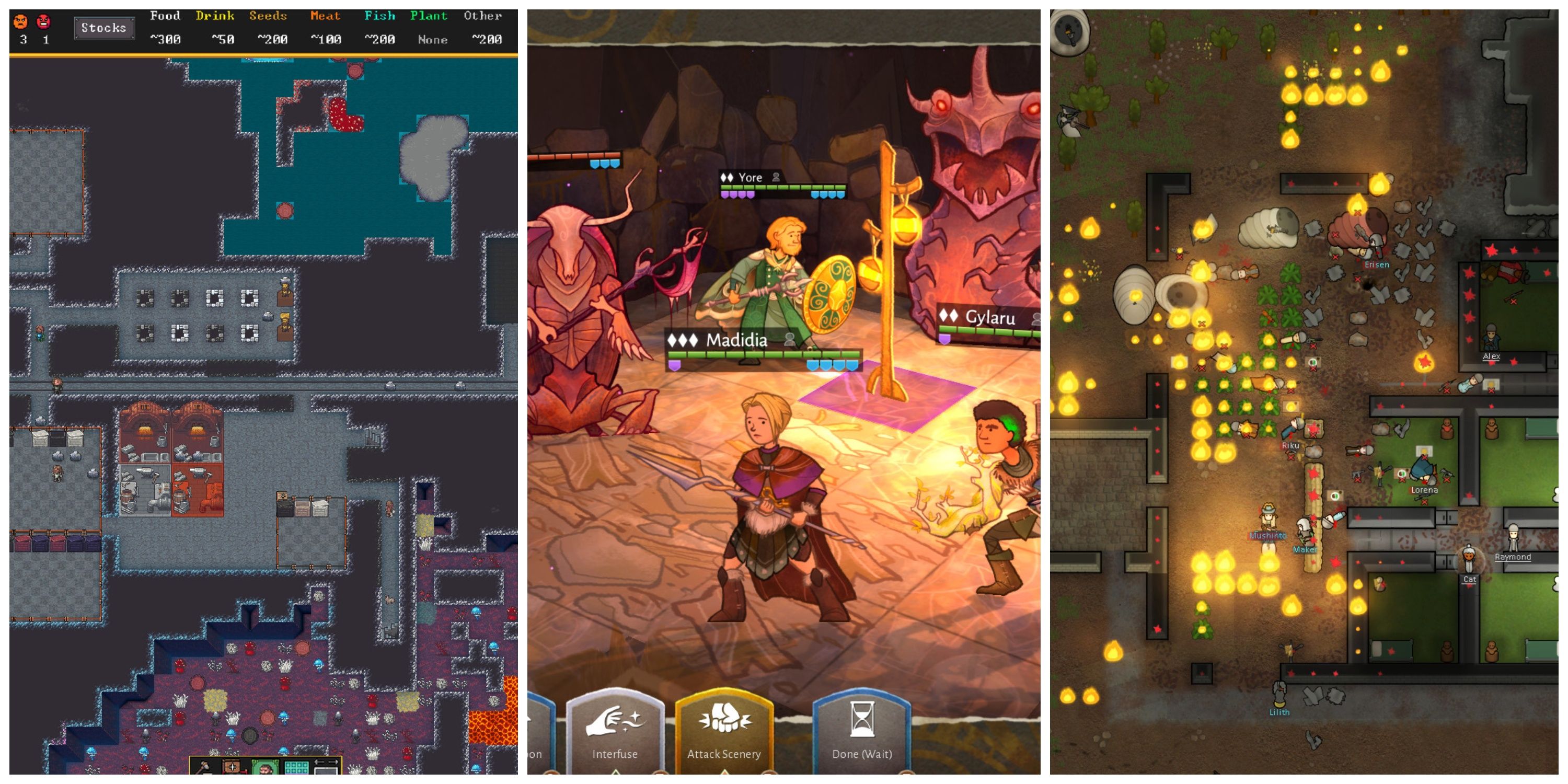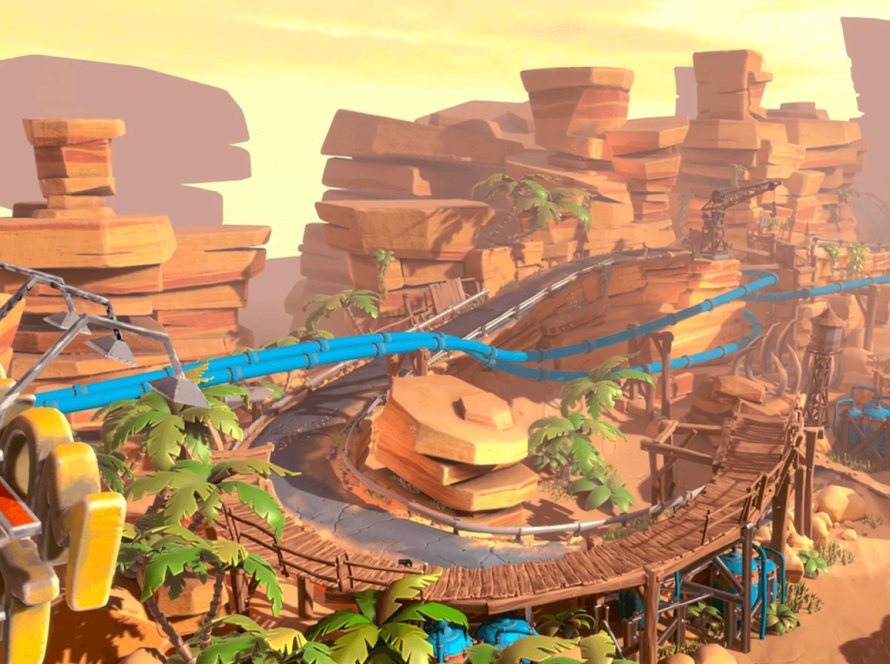In the ever-evolving landscape of the gaming industry, 2D games have remained a beloved and enduring genre, captivating audiences with their timeless charm and innovative gameplay mechanics. As technology advances and the demand for immersive experiences grows, a new generation of independent game developers and studios are pushing the boundaries of what 2D games can offer, breathing fresh life into this beloved genre.
1. Rise of Independent Game Developers

The rise of independent game developers has been a driving force behind the resurgence of 2D games. With the democratization of game development tools and digital distribution platforms, indie developers have the freedom to explore unconventional ideas and experiment with unique art styles and gameplay mechanics.
Artistic Expression and Creativity
Independent developers often prioritize artistic expression and creativity over strict adherence to industry norms. This has led to a diverse array of 2D games that challenge traditional conventions, offering players new experiences and perspectives.
One prime example is the critically acclaimed “Celeste” by Matt Makes Games. This indie gem seamlessly blends challenging platforming mechanics with a heartfelt narrative, showcasing the power of 2D games to convey emotional depth and resonate with players on a personal level.
Embracing Retro Aesthetics
Many indie developers have embraced retro aesthetics, drawing inspiration from classic 2D games of the past while infusing them with modern gameplay elements and storytelling techniques. This nostalgic approach has resonated with both long-time gamers and newcomers alike.
Studios like Shovel Knight and WayForward Technologies have mastered the art of creating games that pay homage to the 8-bit and 16-bit eras, while still offering fresh and engaging experiences.
Fostering Community and Collaboration
The indie game development community has fostered a collaborative and supportive environment, where developers share knowledge, resources, and feedback. This has led to the formation of vibrant communities around specific game engines, such as Unity and Game Maker, further fueling the growth of 2D game development.
Indie developers have also embraced crowdfunding platforms like Kickstarter and Indiegogo, allowing them to connect directly with their audience and secure funding for their ambitious projects.
2. Innovations in 2D Game Development Tools

The rise of powerful and accessible game development tools has played a pivotal role in the renaissance of 2D games. These tools have democratized game development, enabling indie developers and small studios to create high-quality 2D games with limited resources.
Game Engines and IDEs
Game engines and integrated development environments (IDEs) like Unity, Godot, and GameMaker Studio have become invaluable tools for 2D game development. These platforms offer robust features, extensive documentation, and vibrant communities, empowering developers to bring their creative visions to life.
One notable example is the widely acclaimed “Hollow Knight” by Team Cherry, developed using Unity. This critically acclaimed 2D action-adventure game showcases the power and versatility of modern game engines in creating visually stunning and engaging 2D experiences.
Pixel Art and Animation Tools
The resurgence of pixel art in 2D games has been facilitated by specialized tools like Aseprite, GraphicsGale, and PyxelEdit. These tools allow artists to meticulously craft pixel-perfect sprites, animations, and environments, capturing the nostalgic charm of classic 2D games while leveraging modern techniques and workflows.
Studios like Yacht Club Games, known for the “Shovel Knight” series, have embraced pixel art as a core artistic style, showcasing the enduring appeal of retro aesthetics in modern 2D games.
Level Design and Scripting Tools
Level design tools like Tiled and Ogmo Editor have streamlined the process of creating intricate 2D levels and environments, enabling developers to craft immersive and visually stunning worlds with ease.
Additionally, scripting tools like Lua and GameMaker Language (GML) have empowered developers to create complex gameplay mechanics and interactive systems, pushing the boundaries of what 2D games can offer.
3. Impact of Retro Aesthetics on Modern 2D Games
The resurgence of retro aesthetics in 2D games has been a significant trend, resonating with both nostalgic gamers and newcomers alike. Indie developers and studios have embraced the charm of 8-bit and 16-bit visuals, blending them seamlessly with modern gameplay mechanics and narratives.
Nostalgia and Artistic Expression
Retro aesthetics tap into a deep well of nostalgia, evoking memories of classic gaming experiences from the past. However, modern 2D games have transcended mere nostalgia by using retro visuals as a canvas for artistic expression and storytelling.
Games like “Stardew Valley” by Eric Barone and “Undertale” by Toby Fox have demonstrated how retro aesthetics can be used to create immersive and emotionally resonant worlds, captivating players with their unique art styles and compelling narratives.
Accessibility and Inclusivity
The simplicity and familiarity of retro visuals have also contributed to the accessibility and inclusivity of 2D games. These games often have a low barrier to entry, allowing players of all ages and skill levels to enjoy them without being overwhelmed by complex graphics or controls.
Retro-inspired games like “Terraria” by Re-Logic and “Axiom Verge” by Thomas Happ have attracted a diverse player base, with their intuitive gameplay and nostalgic charm appealing to both seasoned gamers and newcomers alike.
Retro Reimagined
While some 2D games faithfully recreate the retro experience, others have taken a more innovative approach, blending retro aesthetics with modern gameplay mechanics and visual effects.
Games like “Dead Cells” by Motion Twin and “Katana ZERO” by Askiisoft have pushed the boundaries of what retro-inspired games can achieve, incorporating intricate combat systems, dynamic lighting, and particle effects, creating a unique visual and gameplay experience that pays homage to the past while embracing modern advancements.
4. Emergence of New Gameplay Mechanics in 2D Games
Despite the limitations of the 2D plane, indie developers and studios have been pushing the boundaries of what’s possible in terms of gameplay mechanics, breathing new life into the genre and offering players fresh and engaging experiences.
Innovative Platforming Mechanics
Platformers have always been a staple of the 2D gaming experience, and indie developers have found ingenious ways to reinvent and expand upon this classic genre.
Games like “GRIS” by Nomada Studio and “Inside” by Playdead have introduced innovative platforming mechanics that blur the line between gameplay and artistic expression, creating truly unique and memorable experiences.
Genre-Blending and Hybridization
2D game developers have also embraced genre-blending, combining elements from various genres to create unique and engaging gameplay experiences.
“Dead Cells” by Motion Twin seamlessly blends elements of roguelikes, action-platformers, and Metroidvanias, resulting in a challenging and highly replayable game that keeps players coming back for more.
Emergent and Procedural Systems
Indie developers have also explored the potential of emergent and procedural systems in 2D games, creating dynamic and unpredictable gameplay experiences that evolve organically.
Games like “Noita” by Nolla Games and “Spelunky” by Derek Yu incorporate procedurally generated levels and physics-based systems, ensuring that each playthrough is a unique and challenging adventure.
5. Collaborations between Indie Studios and Major Players
While indie developers and small studios have been at the forefront of the 2D gaming renaissance, major players in the industry have also recognized the potential and appeal of 2D games. This has led to fruitful collaborations and partnerships, benefiting both independent studios and larger publishers.
Publishing and Distribution Partnerships
Many major publishers have established indie-focused publishing labels or initiatives, providing independent studios with the resources and support needed to bring their 2D games to a wider audience.
For example, Annapurna Interactive has collaborated with studios like Giant Sparrow (“What Remains of Edith Finch”) and Mobius Digital (“Outer Wilds”), helping to bring their critically acclaimed 2D games to various platforms and audiences.
Cross-Platform Support and Porting
As the demand for cross-platform gaming experiences grows, major players have recognized the importance of supporting 2D games across multiple platforms, including consoles, PCs, and mobile devices.
Studios like Ska Studios, known for the “Salt and Sanctuary” series, have benefited from partnerships with publishers like Blitworks and Koch Media, enabling them to bring their 2D games to a wide range of platforms and reach a broader audience.
Talent Acquisition and Development
In some cases, major players have acquired or supported independent studios, providing them with the resources and support needed to continue creating innovative 2D games.
For example, Microsoft’s acquisition of Double Fine Productions, the studio behind the critically acclaimed “Psychonauts” series, has allowed Double Fine to expand its creative vision and resources, leading to the development of new 2D games like “RAD” and “Headlander.”
Creative Collaborations and Crossovers
Collaborations between indie studios and major players have also resulted in creative crossovers and partnerships that bring together diverse talents and perspectives.
For instance, the collaboration between Studio MDHR (“Cuphead”) and Nintendo resulted in the inclusion of Cuphead as a playable character in “Super Smash Bros. Ultimate,” showcasing the impact and recognition of indie games within the broader gaming community.
6. Trends in Narrative Storytelling in 2D Games

The storytelling potential of 2D games has evolved significantly in recent years, with indie developers exploring innovative narrative techniques and themes that resonate with players on a deeper level.
Non-Linear Narratives and Player Choice
Many indie 2D games have embraced non-linear narratives and player choice, allowing players to shape the story through their actions and decisions.
Games like “Celeste” by Maddy Makes Games and “Oxenfree” by Night School Studio offer branching storylines and multiple endings, providing players with a sense of agency and emotional investment in the narrative.
Emotional Depth and Character Development
Indie developers have focused on creating emotionally resonant stories and well-developed characters in 2D games, challenging traditional notions of storytelling in the medium.
Titles like “Hollow Knight” by Team Cherry and “Gris” by Nomada Studio delve into themes of loss, resilience, and self-discovery, immersing players in richly detailed worlds and compelling narratives that leave a lasting impact.
Experimental Narratives and Story Structures
Some indie developers have pushed the boundaries of narrative storytelling in 2D games, experimenting with unconventional story structures and interactive storytelling techniques.
Games like “Kentucky Route Zero” by Cardboard Computer and “Her Story” by Sam Barlow offer players unique narrative experiences, using fragmented storytelling and non-traditional gameplay mechanics to engage players in unexpected ways.
7. Challenges and Opportunities for 2D Game Developers
While the 2D game development scene is thriving, indie developers face a range of challenges and opportunities as they navigate the competitive landscape of the gaming industry.
Market Saturation and Visibility
With the proliferation of indie games in the market, standing out and gaining visibility can be a significant challenge for 2D game developers.
Developers must invest in marketing strategies, community engagement, and partnerships to ensure their games reach their target audience and stand out amidst the competition.
Resource Constraints and Budgeting
Independent studios often operate with limited resources and budgets, requiring them to make strategic decisions about resource allocation and project management.
Developers must prioritize key aspects of game development, such as gameplay mechanics, art style, and narrative, while managing costs and timelines to ensure a successful and sustainable project.
Innovation and Differentiation
In a crowded market, innovation and differentiation are essential for 2D game developers to capture players’ attention and interest.
Developers must continually push the boundaries of what’s possible in 2D game development, experimenting with new gameplay mechanics, artistic styles, and narrative approaches to create unique and memorable gaming experiences.
8. Exploring the Potential of Cross-Platform 2D Gaming
The rise of cross-platform gaming has opened up new possibilities for indie developers to reach a broader audience and engage players across different devices and platforms.
Seamless Cross-Platform Integration
Cross-platform support allows players to enjoy 2D games on various devices, including consoles, PCs, and mobile devices, without losing progress or compromising the gaming experience.
Developers can leverage cross-platform tools and technologies to ensure a seamless and consistent experience for players, enabling them to enjoy their favorite games wherever they go.
Community Building and Engagement
Cross-platform gaming fosters a sense of community and connectivity among players, regardless of the devices they use.
Developers can cultivate vibrant and engaged communities around their 2D games, organizing cross-platform events, competitions, and collaborations that bring players together and enhance the overall gaming experience.
Scalability and Longevity
By embracing cross-platform development, indie studios can future-proof their games and ensure scalability and longevity in an ever-evolving gaming landscape.
Developers can adapt their games to new platforms and technologies, reaching new audiences and markets while maintaining a consistent and high-quality gaming experience across different devices.
9. The Influence of Mobile Gaming on 2D Game Development
The popularity of mobile gaming has had a profound impact on the development and evolution of 2D games, shaping design trends, gameplay mechanics, and distribution strategies in the industry.
Accessibility and Casual Gaming
Mobile devices have democratized gaming, making it more accessible and convenient for players to enjoy 2D games on the go.
Developers have capitalized on the casual gaming trend, creating bite-sized 2D experiences that cater to mobile players’ preferences for quick sessions and intuitive gameplay mechanics.
Free-to-Play and Monetization Strategies
The free-to-play model has become prevalent in mobile gaming, allowing developers to reach a wider audience and monetize their games through in-app purchases, ads, and microtransactions.
Indie studios have adopted various monetization strategies, balancing player engagement and revenue generation to sustain ongoing development and support for their 2D games.
Mobile-First Design and Optimization
Developers are increasingly designing 2D games with a mobile-first approach, optimizing gameplay mechanics, controls, and user interfaces for touchscreens and smaller screens.
By prioritizing mobile compatibility and performance, developers can ensure a smooth and enjoyable gaming experience for mobile players, maximizing reach and engagement across different devices.
10. Future Prospects for 2D Games in the Gaming Industry
As indie developers continue to innovate and push the boundaries of 2D game development, the future looks bright for the genre, with exciting opportunities and challenges on the horizon.
Evolution of Technology and Tools
Advancements in technology, game engines, and development tools will empower indie studios to create even more ambitious and visually stunning 2D games in the future.
Developers can leverage cutting-edge tools like Unity, Unreal Engine, and Godot to realize their creative visions and deliver immersive and engaging gaming experiences to players worldwide.
Diversification and Inclusivity
The 2D gaming landscape will continue to diversify and embrace inclusivity, welcoming developers from diverse backgrounds and cultures to share their stories and perspectives through games.
Players can look forward to a wider range of 2D games that explore unique themes, art styles, and gameplay mechanics, reflecting the richness and diversity of the global gaming community.
Sustainability and Ethical Game Development
As the gaming industry grapples with issues of sustainability and ethical game development, indie studios have an opportunity to lead by example and prioritize responsible practices in their 2D game projects.
Developers can focus on promoting diversity, inclusion, and environmental consciousness in their games, fostering positive social impact and contributing to a more sustainable and ethical gaming ecosystem.
Conclusion
The rise of independent game developers has ushered in a new era of creativity, innovation, and diversity in the 2D gaming industry. From the innovations in 2D game development tools to the impact of retro aesthetics on modern games, indie studios have been at the forefront of pushing the boundaries of what’s possible in the medium.
As indie developers continue to collaborate with major players, explore new gameplay mechanics, and embrace cross-platform gaming, the future of 2D games looks promising, with endless opportunities for growth and evolution. By staying true to their creative vision, embracing innovation, and fostering inclusivity, indie studios will shape the future of 2D games and continue to captivate players with their unique and compelling gaming experiences.




